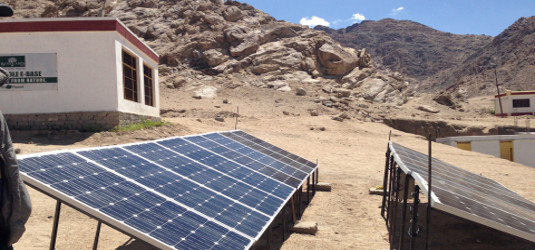Tamil Nadu, one of India’s strongest solar states, has issued a further call for national and international consortiums to express interest in developing a 500 MW solar park in the state.
The Tamil Nadu Energy Development Agency (TEDA) is proposing the development of an ultra mega solar park on a contiguous piece of land at least 1,000 hectares in size and located in one of the state’s sunniest regions.
Potential developers are asked to apply online before May 5, with the Solar Energy Corporation of India (SECI) set to collaborate with the successful bidder on the development of the solar park. Upon completion, the park’s owner will have the option if signing a power purchase agreement (PPA) with a central, state or third-party utility, with the tariff rate set by either the Central Electricity Regulatory Commission (CERC) or by the State Electricity Regulatory Commission (SERC).
Meanwhile in Karnataka, the National Thermal Power Corporation (NTPC) has retendered 750 MW of solar at the state’s Pavagada Solar Park following a rapid effort by the state to bring levels of infrastructure and availability of evacuation up to scratch.
Initially tendered in 2016, the 750 MW of solar potential has remained unrealized due to these poor conditions on the ground. However, a NTPC official has confirmed that a suite of substations are being built to resolve this issue of evacuation and insufficient power infrastructure, which has prompted the retendering.
Details of the new project reveal that the tender will comprise six 125 MW solar farms, with developers asked to design, engineer, build, supply, maintain and report on the plants’ progress for at least five years after the date of successful completion.
The Pavagada solar project has attracted tendering of 1 GW of capacity, reports Mercom Capital, of which 750 MW was in the “Open” category and the remaining 250 MW held over for local developers under the Domestic Content Requirement (DCR) category. Under this latter capacity the expectation is that the bid deadline will be extended for another couple of months and, if no takers are found, will be retendered once more as DCR capacity.
Popular content
Despite being the national thermal power provider, NTPC has now installed 500 MW of solar capacity in India, Mercom added.
Elsewhere in India, local media reports over the weekend have stated that Telangana state energy minister G Jagadishwar Reddy is confident that the state can end 2017 as the leading solar state in India. Telangana is on course to reach 2 GW of installed solar capacity by the end of the year, Reddy said, and is on target to reach 5 GW within the next few years.
More solar power looming
As if India was not already battering down barriers to solar deployment, the government has sought to go even one step further with the news that it is developing a solar energy program for the power loom sector.
The program will be introduced for running power loom units and not individual components, and will support off-grid as well as on-grid decentralized solar installations. The program is expected to come into effect on April 1 and will provide financial assistance and subsidies of between 50-90% for power looms threatened with insecure or irregular electricity supply.
India’s power loom industry is worth an estimated $89 billion annually and contributes to around 70% of the total jobs in the country’s textile industry, accounting for more than 6.5 million employees. However, many of the nation’s 2.5 million power loom facilities are located in rural areas or regions prone to power blackouts.
This content is protected by copyright and may not be reused. If you want to cooperate with us and would like to reuse some of our content, please contact: editors@pv-magazine.com.


1 comment
By submitting this form you agree to pv magazine using your data for the purposes of publishing your comment.
Your personal data will only be disclosed or otherwise transmitted to third parties for the purposes of spam filtering or if this is necessary for technical maintenance of the website. Any other transfer to third parties will not take place unless this is justified on the basis of applicable data protection regulations or if pv magazine is legally obliged to do so.
You may revoke this consent at any time with effect for the future, in which case your personal data will be deleted immediately. Otherwise, your data will be deleted if pv magazine has processed your request or the purpose of data storage is fulfilled.
Further information on data privacy can be found in our Data Protection Policy.